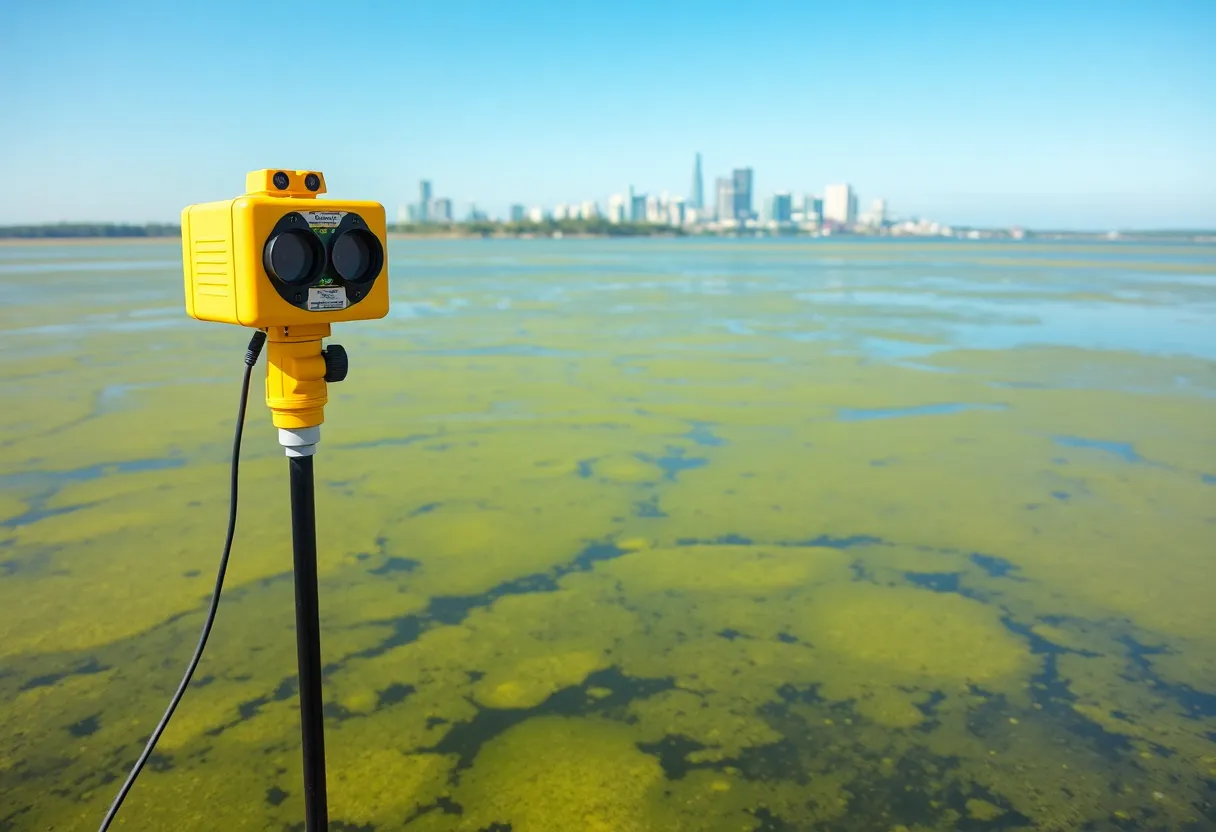Buffalo, NY, October 14, 2025
Residents in Buffalo, NY, are noticing changes in the taste and odor of their tap water, attributed to seasonal algae blooms in Lake Erie. The Erie County Water Authority (ECWA) assures the public that the water is safe to drink and meets all federal standards. ECWA officials state that these changes are normal and will resolve as cooler weather arrives. They advise residents to run their taps to flush out any temporary flavors. This annual occurrence has been monitored closely without health concerns.
Buffalo, NY: Seasonal Water Taste and Odor Changes Confirmed as Harmless by Officials
Buffalo, NY – October 14, 2025 – Residents across Buffalo and surrounding areas in Erie County have begun noticing changes in their tap water’s taste and odor, but local authorities confirm these are normal seasonal shifts caused by algae blooms in Lake Erie. The Erie County Water Authority (ECWA) has assured the public that the water remains safe to drink, with no health risks involved and quality meeting all federal standards.
The issue stems from natural algae growth in the lake during warmer months, which can affect the sensory qualities of water drawn from the source. ECWA officials emphasize that this is an annual occurrence and does not indicate any contamination or failure in the water treatment process. As cooler fall weather sets in, the blooms typically subside, leading to a return to normal taste and odor within weeks.
To address immediate concerns, authorities recommend simple steps for affected households. Running cold water taps for a few minutes can help flush out any temporary off-flavors lingering in pipes. This straightforward action often resolves the problem quickly for most users. Boiling the water is unnecessary, as it poses no safety threat and complies fully with rigorous testing protocols set by federal regulations.
Understanding the Cause and Seasonal Pattern
Algae blooms in Lake Erie are a common environmental phenomenon, particularly in late summer and early fall when water temperatures remain elevated. These blooms, primarily consisting of non-toxic algae species, release organic compounds that subtly alter the water’s flavor and smell as it passes through treatment facilities. ECWA’s advanced filtration and disinfection systems effectively neutralize any potential risks, ensuring the end product is pure and potable.
This pattern has repeated yearly without incident, as the authority maintains vigilant monitoring of lake conditions and water quality. Sampling stations along the waterfront and within the distribution network confirm consistent compliance with standards from the Environmental Protection Agency (EPA). Residents may detect earthy or musty notes, but these sensory changes do not impact the water’s clarity, potability, or mineral content.
ECWA’s Response and Public Guidance
The Erie County Water Authority has proactively notified the community through its standard communication channels, highlighting the temporary nature of the issue. No disruptions to water service are expected, and supplies remain uninterrupted. For those in multifamily buildings or older homes with longer pipe runs, the flushing recommendation may need to be repeated periodically until the seasonal transition completes.
Water quality reports, updated regularly on public dashboards, show no deviations in key parameters like pH, chlorine levels, or microbial counts. This transparency helps build trust, as ECWA continues to invest in infrastructure upgrades to adapt to environmental variables like algae proliferation. The authority also encourages residents to report any persistent issues directly, though most cases align with this seasonal norm.
Broader Context of Lake Erie Water Management
Lake Erie serves as a vital resource for millions in the Great Lakes region, providing drinking water to Buffalo and beyond. Managing algae blooms involves coordinated efforts between local utilities, state environmental agencies, and federal oversight. While nutrient runoff from agriculture and urban areas contributes to bloom intensity, ongoing conservation programs aim to mitigate these factors over time.
In recent years, ECWA has enhanced its pretreatment capabilities, including activated carbon filtration, to minimize taste and odor impacts before they reach consumers. These measures, combined with seasonal adjustments to treatment chemicals, keep the system robust against natural fluctuations. Historical data indicates that such episodes peak in September and October, resolving as water temperatures drop below 20 degrees Celsius.
For Buffalo households relying on municipal supply, this event underscores the reliability of the local water system despite environmental challenges. Staying informed through official updates ensures minimal disruption, allowing residents to maintain their routines without worry. As the season progresses, expect the water to revert to its usual profile, reaffirming the safety of this essential service.
Historical Recurrence and Community Impact
This is not the first time Buffalo has experienced such changes; similar notices have been issued annually for over a decade, always without health consequences. Community feedback during past events has guided refinements in communication, making information more accessible. Areas closest to intake points along the Niagara River may notice effects first, but distribution evens out as water mixes throughout the network.
Educating the public on these cycles promotes conservation awareness, as reduced water waste during flushing benefits the overall system. ECWA’s commitment to exceeding federal standards—through daily testing and rapid response protocols—positions it well to handle such predictable challenges. In the meantime, alternative beverages or filters offer options for those sensitive to taste variations, though unnecessary for health reasons.
FAQ
What is causing the changes in Buffalo’s tap water taste and odor?
Seasonal changes in water taste and odor are due to algae blooms in Lake Erie.
Is the water safe to drink in Buffalo right now?
The Erie County Water Authority reports seasonal changes in water taste and odor due to algae blooms in Lake Erie, but assures residents it’s harmless. No health risks are present, and water quality meets federal standards.
What should Buffalo residents do if they notice the taste or odor issue?
Officials recommend running taps to clear any temporary issues.
How long will this water issue last in Buffalo?
This annual occurrence typically resolves with cooler weather.
Key Features of Buffalo’s Seasonal Water Issue
| Feature | Description |
|---|---|
| Cause | Algae blooms in Lake Erie |
| Safety Status | Harmless; no health risks |
| Water Quality | Meets federal standards |
| Recommended Action | Run taps to clear temporary issues |
| Duration | Annual occurrence; resolves with cooler weather |
Deeper Dive: News & Info About This Topic
HERE Resources
Buffalo Hosts Annual Beat the Beast Obstacle Course Event at Riverworks
Buffalo Golf Association Unearths Rare Golf Artifacts
Buffalo Golf Association Announces Major Expansion for Public Courses
Beloved High School Coach Jason Beckman Dies in Accident
Buffalo Mayoral Candidates Call for City Hall Reforms to Support Business Growth
Buffalo Invests $5 Million to Upgrade Public Golf Facilities
Buffalo Hosts ‘Falliday’ Celebration at RiverWorks
Buffalo Golf Foundation Announces $500,000 Grant for Course Renovations
Dożynki Polish Harvest Festival Draws Thousands in Buffalo
Buffalo Invests $2 Million in Cazenovia Park Golf Course Upgrades




